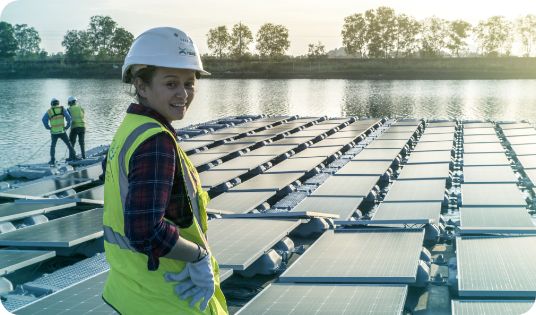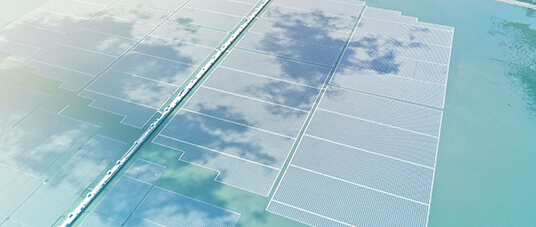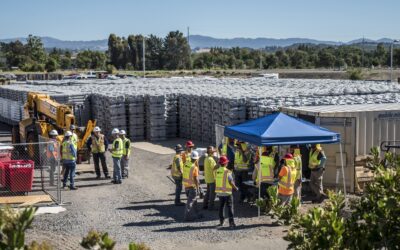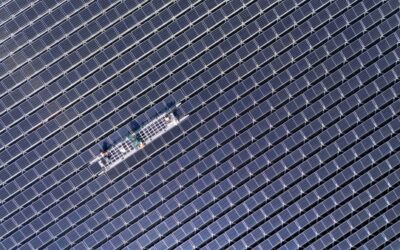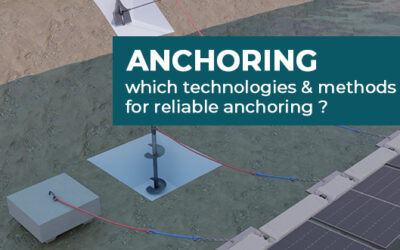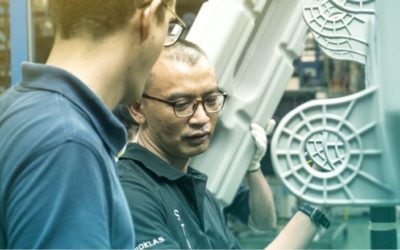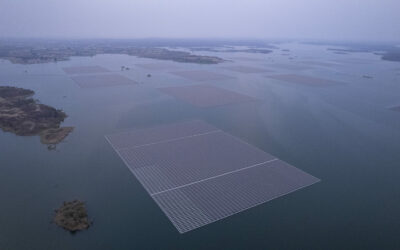EPC refers to contractors that handle everything from the design to the construction of a power plant. When you hire an EPC contractor for solar power installation, you benefit from comprehensive project proposals and a single point of contact in case of any issues. In short, working with an EPC ensures the efficient execution of the entire project.
To provide a broader range of services to its clients, Ciel & Terre Japan has expanded its scope by incorporating key EPC activities.
In this article, we will explore the role of EPC contractors in floating solar power plants, detail Ciel & Terre Japan’s approach, and highlight the first project they have successfully managed as a “floating EPC”.
What is an EPC in Floating Solar Power Industry?
In the floating solar sector, EPC contractors oversee the entire project lifecycle, from power plant design and component procurement to construction and commissioning. The term “EPC” stands for Engineering, Procurement, and Construction, which are the three fundamental pillars ensuring a project’s success. It streamline the process by handling everything from design planning and component selection to procurement and construction execution.
An Engineering role to design the floating solar power plant
The design phase is a critical step that ensures the floating solar plant’s efficiency and durability. It involves:
- Site Survey – A Must-Have Before Any Design : The EPC conducts a detailed site assessment to evaluate sunlight exposure, potential shading, water depth, wave action, and environmental constraints. This is particularly crucial in floating solar projects where wind loads, currents, and hydrodynamic forces must be considered.
- Design and Layout Planning : Engineers create a blueprint for the floating system. They aim to provide the optimal arrangement of solar panels, mooring structures, and electrical connections.
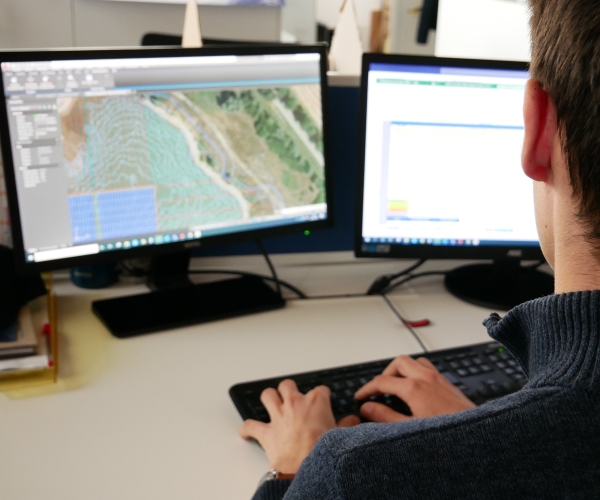
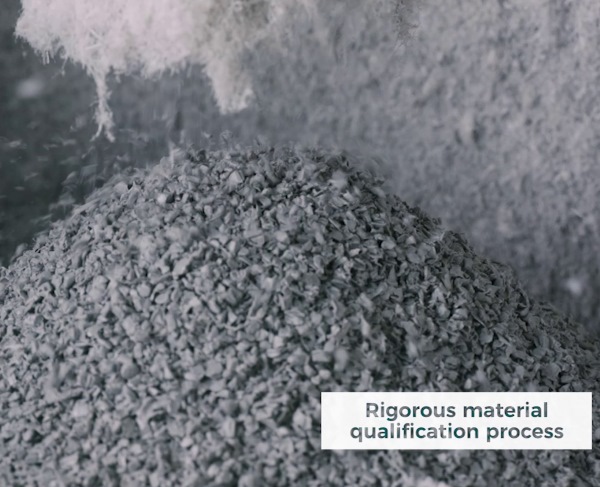
- Coordination with Local Authorities: Depending on the project’s scale and location, the EPC may need to obtain permits, conduct environmental impact assessments, and engage with local stakeholders.
- Component Selection: Solar panels, inverters, floating structures, and electrical components are chosen based on durability, efficiency, warranty, and site conditions.
- Power Generation Simulations: Simulations are conducted to estimate power output, financial feasibility, and expected long-term performance.
- Cost Estimation: A detailed budget analysis is prepared, including equipment, labor, logistics, and potential contingency costs.
The EPC manages the Procurement and sourcing of the different components
The procurement phase involves sourcing and managing essential components and materials, ensuring they are site-adapted and meet technical specifications.
Key activities include:
- Securing necessary components
- Storage and inventory management
- Quality control
Ensuring high-quality components is critical, especially for floating solar projects, where environmental conditions can be particularly challenging.
Procurement requires an in-depth evaluation of environmental conditions such as :
- water type (freshwater, seawater, or brackish water),
- wave action, wind loads,
- and current forces.
All these parameters will directly impact the materials and devices selection. For example, nearshore or high-current sites require corrosion-resistant materials and reinforced anchoring solutions.
By integrating site-specific data into procurement, EPC contractors enhance system durability, reduce maintenance costs, and optimize long-term reliability.
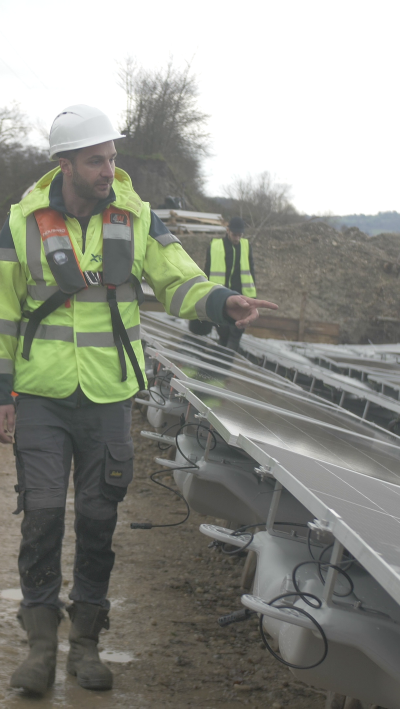
Construction and installation of the floating solar plant by the EPC
The construction phase involves installation and site management. In floating solar projects, specific challenges require specialized execution, including:
- Floating system assembly: Floating solar platforms are assembled on land, requiring precise interconnections to ensure stability.
- Anchoring and mooring installation: This critical step ensures the floating structure remains stable against waves, wind loads, water currents, and seasonal water level variations.
- Electrical wiring and connection: Unlike land-based solar plants, floating solar requires specific cable management to protect the devices like floating cable trays, and specialized connectors.
- On-Site Project Management: Working on water requires specialized safety measures, including life jackets, boats, and emergency protocols.
Ciel & Terre Japan expands its scope of work with EPC services
Since entering Japan in 2013, Ciel & Terre has led the floating solar industry for over 11 years. Expanding its scope, the company established an O&M division in 2019 and officially launched its EPC activities in 2023. These first projects are a key milestone in its journey toward delivering end-to-end floating solar solutions.
Ciel & Terre Japan is using its FPV expertise to provide floating EPC services
Building on its leadership and expertise in floating solar, Ciel & Terre Japan has now taken a major step forward by integrating EPC (Engineering, Procurement, and Construction) services into its offering. This strategic expansion strengthens its position in the Japanese floating solar market. Indeed, the team is now providing a one-stop solution that covers everything from design and procurement to construction and long-term maintenance.
By incorporating EPC into its business model, Ciel & Terre Japan can now offer greater efficiency, streamlined project management, and improved cost control to its clients. This move enhances first, the reliability and quality of floating solar projects as being the only point of contact for the floating works and expertise. Second, it reinforces the company’s ability to deliver tailor-made solutions adapted to Japan’s environmental and regulatory landscape.
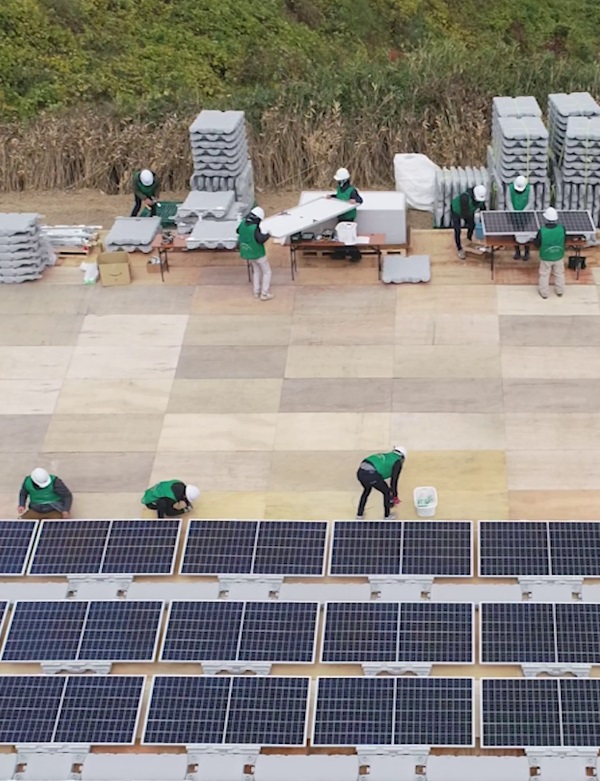
Ciel & Terre Japan’s First Projects as a Floating Solar EPC
Ciel & Terre Japan’s first milestone projects under its EPC model have been successfully delivered at Komo Ike and Kaichi Ike reservoirs in Tadotsu Town, Kagawa Prefecture, in partnership with Akiyama Kosan Co., Ltd.. These installations mark the first time within the Ciel & Terre Japan that a project has been fully managed from design to EPC and O&M.
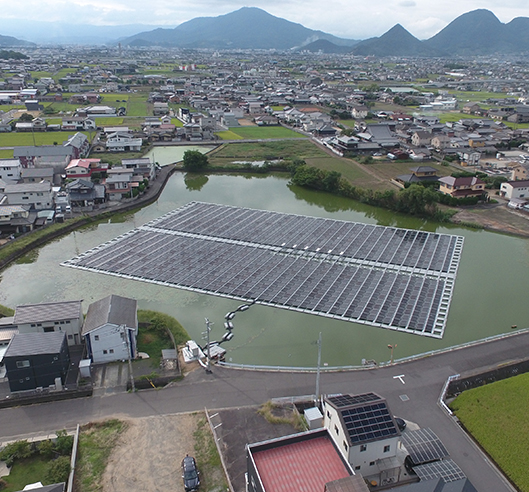
image : Komo Ike, 0.8MWp, irrigiation pond, ©Ciel & Terre Japan
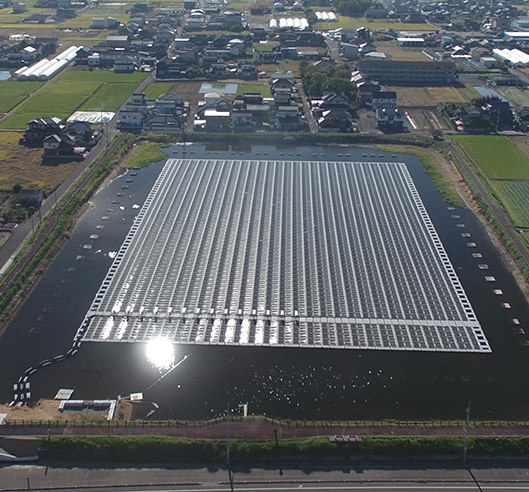
image : Kaichi Ike, 1.9MWp, irriagtion pond, ©Ciel & Terre Japan
Additionally, the projects feature Ciel & Terre’s Air Optim float system, which is uniquely designed to support large-format (M12-sized) solar panels.
With the successful completion of these projects, Ciel & Terre Japan is now poised to further expand its EPC services, contributing to the growth of floating solar in Japan and the transition to a carbon-neutral future.
By Chloé, marketing
